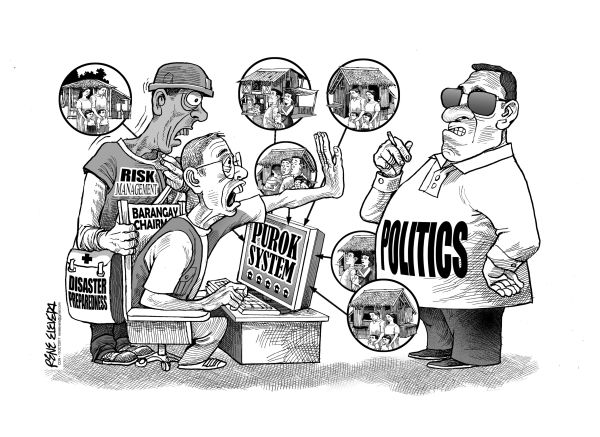
It is quite timely for the Cebu provincial government to push through with the institutionalization of the purok system similar to the Bohol province model; but they need not look farther than San Francisco town on Camotes Island, Cebu, which also implemented a very effective purok system.
In fact, as most everyone knows by now, it is San Francisco town’s purok system that enabled its residents to survive the brunt of Super Typhoon Yolanda’s devastation back on November 8, 2013.
And the credit goes to former mayor Alfredo Arquillano Jr. for setting up in 2004 the purok system that saved his constituents from Yolanda nine years later.
In 2014, Cebu City’s Barangay Guadalupe became the first Metro Cebu barangay to adopt the purok system instituted by San Francisco town; and while the immediate benefits have yet to be spelled out, it is significant since Guadalupe remains to be the most populated barangay in Cebu City, one of whose residents happen to be the city’s incumbent mayor.
So it was only a matter of time before Cebu province found a way to institutionalize the purok system that may or may not be modeled after Bohol province, which found the purok system quite valuable in its recent encounter with unwanted visitors going by the group name Abu Sayyaf.
Were it not for the purok system that inculcated a sense of vigilance among residents in Bohol’s Inabanga town, these bandits would have had their way and kidnapped foreign delegates who were in the province for the ministerial round of the Association of Southeast Asian Nations (Asean) summit meetings.
A reliable purok system consists, among other things, of residents registering themselves in the purok and the purok leaders gaining a database of the residents living within their area along with knowledge of their background.
This database can be used in cases of emergencies, where a household with family members specializing in certain skills can be tapped for the purok’s programs in health, security, and so on.
Not only would it help identify the residents within a given community, the purok database can also be useful in cracking down on criminal elements like drug dealers and cyberpornography dens.
There are concerns of course that the purok system may be infused with parochial politics. Visiting groups of volunteers sent to deliver assistance may be treated with suspicion and distrust by the local populace held under the sway of the local ruling politician.
But with coordination and assistance from the wider community base, in particular stakeholders like the residents, church and some civic groups, local officials can effectively mobilize support for initiatives that cut across political partisan lines and ensure a responsive, capable community.

